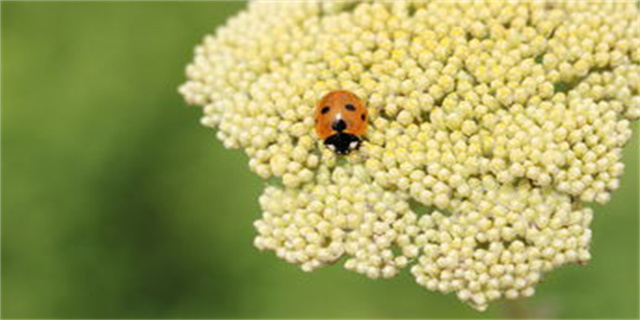首页 > 综合百科 正文
Garland: A Symbol of Festivity and Joy
Garlands have been an integral part of celebrations and decorations for centuries. These beautiful decorative wreaths, made from a variety of materials, symbolize festivity, joy, and a sense of abundance. In this article, we will explore the history of garlands, their significance in different cultures, and the various materials used to create these exquisite creations.
The Historic Significance of Garlands
Garlands have a rich historical significance that can be traced back to ancient times. In many ancient civilizations, such as Greece, Rome, and Egypt, garlands were used in religious rituals and ceremonies. They were often made from sacred plants and flowers and were believed to possess powers to ward off evil spirits and bring blessings and good luck. Garlands were also used to honor gods and goddesses during festive occasions and were seen as a symbol of devotion and respect.

The tradition of using garlands in celebrations and ceremonies spread across various cultures and continents over time. In South Asia, garlands hold great cultural importance. They are extensively used in weddings, religious festivals, and other joyous occasions. The exchange of garlands between the bride and groom during an Indian wedding symbolizes their acceptance and union. Garlands made from fragrant flowers, like jasmine, are particularly popular in these traditions, as they add a touch of beauty and elegance to the festivities.
A Variety of Materials and Styles
Garlands can be created using a wide range of materials, allowing for endless creativity and versatility. Flowers, leaves, fruits, and even fabric are commonly used to make garlands. Each material brings its unique charm and significance to the decorative wreaths. Floral garlands are vibrant and fragrant, adding natural beauty to any setting. They can be made from a single type of flower or a combination of various blooms, depending on the desired effect. Leaf garlands, on the other hand, provide a fresh and earthy touch to decorations, often used in outdoor events or rustic-themed celebrations.

Fruits and berries have also been used in garlands, especially during harvest festivals or autumn-themed decorations. Garlands made from apples, berries, and dried fruits add a sense of abundance and warmth to the ambiance. Additionally, fabric garlands have gained popularity in recent years. These garlands can be made from ribbons, colorful fabrics, or even recycled materials, allowing for endless customization options. Fabric garlands are often used in parties, weddings, and home decor, adding a touch of whimsy and playfulness to the surroundings.
The Modern Adaptation of Garlands
In today's modern world, garlands have become a popular choice for decorations in various settings. From homes and event venues to offices and public spaces, garlands bring a sense of joy and celebration to any environment. They are often used during holidays, such as Christmas and New Year, adding a festive touch to the surroundings. Garlands made from evergreen plants, like holly and pine, are commonly used during these occasions, symbolizing eternal life and renewal.
Moreover, garlands have found their way into interior design trends. They can be hung on walls, wrapped around banisters, or used as table centerpieces, adding a touch of natural beauty and elegance to the space. Garlands made from artificial materials, such as paper or felt, are also widely available, offering a long-lasting and reusable option for decorations.
In conclusion, garlands hold a special place in the hearts of people worldwide. Their historic significance, cultural symbolism, and versatility in materials and styles make them a cherished element of celebrations and decorations. Whether it's a wedding, religious festival, or a simple gathering with loved ones, garlands bring joy, beauty, and a festive spirit to the occasion.
猜你喜欢
- 2024-01-20 beatssolo2(Beats Solo2 Unlock the Ultimate Music Experience)
- 2024-01-20 c2p生态集群(构建C2P生态集群 完善云计算生态圈)
- 2024-01-20 10款思铂睿改装轮毂什么型号(10款思铂睿升级轮毂选择)
- 2024-01-20 garland(Garland A Symbol of Festivity and Joy)
- 2024-01-20 dnf多玩论坛(DNF多玩论坛:探究游戏魅力,分享心得体会)
- 2024-01-20 tp-link路由器怎么设置(如何配置TP-Link路由器)
- 2024-01-20 沙苁蓉功效与作用及食用方法(了解沙苁蓉)
- 2024-01-20 生趣的近义词是什么呢(有趣的同义词是什么呢?)
- 2024-01-20 publisher下载(How to Optimize Your Website for Search Engines)
- 2024-01-20 dailyshow(Welcome to the Daily Show!)
- 2024-01-20 autoform(Autoform Simplify Data Entry for Web Forms)
- 2024-01-20 民办学院升为大学意味着什么(私立学院升级成大学对教育和社会的影响)
- 2024-01-20beatssolo2(Beats Solo2 Unlock the Ultimate Music Experience)
- 2024-01-20c2p生态集群(构建C2P生态集群 完善云计算生态圈)
- 2024-01-2010款思铂睿改装轮毂什么型号(10款思铂睿升级轮毂选择)
- 2024-01-20garland(Garland A Symbol of Festivity and Joy)
- 2024-01-20dnf多玩论坛(DNF多玩论坛:探究游戏魅力,分享心得体会)
- 2024-01-20tp-link路由器怎么设置(如何配置TP-Link路由器)
- 2024-01-20沙苁蓉功效与作用及食用方法(了解沙苁蓉)
- 2024-01-20生趣的近义词是什么呢(有趣的同义词是什么呢?)
- 2023-02-24大盘鸡的家常做法(家常版大盘鸡,方法简单,好吃接地气,吃完汤汁拌面,真过瘾)
- 2023-02-24大连在哪个省(东北三省最发达的城市——大连)
- 2023-02-24大麦茶怎么泡(大麦茶怎么泡?)
- 2023-02-24河蚌怎么处理(为什么在农村很少人吃河蚌?)
- 2023-02-24牛肉丸子的做法(自制纯手工牛肉丸,劲道弹性足,鲜香有嚼劲)
- 2023-02-24浏览器兼容性(浏览器兼容模式怎么设置?)
- 2023-02-24zuoche(领导开车的礼仪)
- 2023-02-24获取ip地址(如何查看电脑ip地址?)
- 2024-01-20c2p生态集群(构建C2P生态集群 完善云计算生态圈)
- 2024-01-20货运代理人英文(Freight Forwarders Your Logistics Solutions Expert)
- 2024-01-19winxpsp3(WindowsXPServicePack3:旧系统的新体验)
- 2024-01-19attempt(Challenging Boundaries An Attempt to Push Beyond Limits)
- 2024-01-19takeyourmark(Setting Your Course for Success A Guide to TakeYourMark)
- 2024-01-19slipping(Accidental Falls A Silent Threat to Our Well-being)
- 2024-01-18002554惠博普(002554惠博普:开启智能家居时代的引擎)
- 2024-01-182022高考贵州分数线预估(2022高考贵州分数线预测)
- 猜你喜欢
-
- beatssolo2(Beats Solo2 Unlock the Ultimate Music Experience)
- c2p生态集群(构建C2P生态集群 完善云计算生态圈)
- 10款思铂睿改装轮毂什么型号(10款思铂睿升级轮毂选择)
- garland(Garland A Symbol of Festivity and Joy)
- dnf多玩论坛(DNF多玩论坛:探究游戏魅力,分享心得体会)
- tp-link路由器怎么设置(如何配置TP-Link路由器)
- 沙苁蓉功效与作用及食用方法(了解沙苁蓉)
- 生趣的近义词是什么呢(有趣的同义词是什么呢?)
- publisher下载(How to Optimize Your Website for Search Engines)
- dailyshow(Welcome to the Daily Show!)
- autoform(Autoform Simplify Data Entry for Web Forms)
- 民办学院升为大学意味着什么(私立学院升级成大学对教育和社会的影响)
- 二级警司在派出所什么职位(二级警司眼中的派出所)
- 货运代理人英文(Freight Forwarders Your Logistics Solutions Expert)
- 二线厨柜品牌有哪些(探寻市场中的二线厨柜品牌)
- 心理ct测评系统多少钱(心理CT测评系统的价格及相关考虑)
- 梦境侦探攻略全部关卡(迷梦解锁——梦境侦探攻略)
- winxpsp3(WindowsXPServicePack3:旧系统的新体验)
- hideaway(Concealed Sanctuary A Hideaway for the Soul)
- ssni-618(SSNI-618 – A Mesmerizing Delight on Screen)
- 3d藏机图全部藏机图牛彩手机(揭秘3D藏机图:探寻牛彩手机的藏宝之旅)
- colorimpact(ColorImpact Unlocking the Power of Color in Design)
- 农夫山泉桶装水招商加盟(加盟农夫山泉桶装水,让你的水生意更上一层楼)
- attempt(Challenging Boundaries An Attempt to Push Beyond Limits)
- 地下城补丁下载(地下城补丁安装指南)
- nmes电疗法治疗原则(NMES电疗法的治疗原则与注意事项)
- takeyourmark(Setting Your Course for Success A Guide to TakeYourMark)
- 冥界亚龙出装17173(冥龙之威-冥界亚龙出装分析)
- slipping(Accidental Falls A Silent Threat to Our Well-being)
- 小石潭记翻译注释及原文(小石潭的传说)
